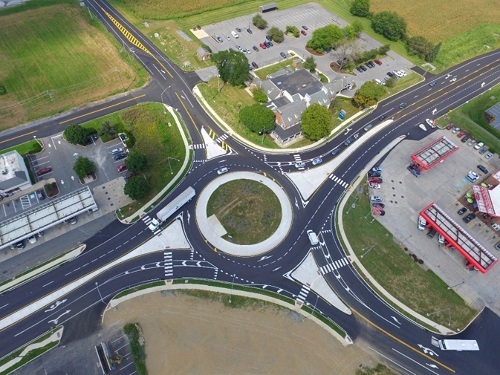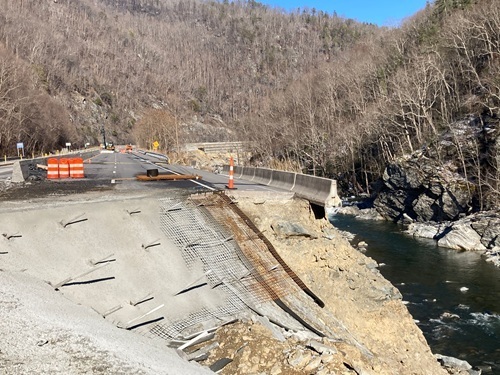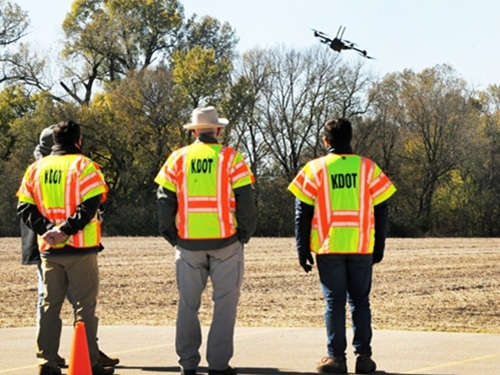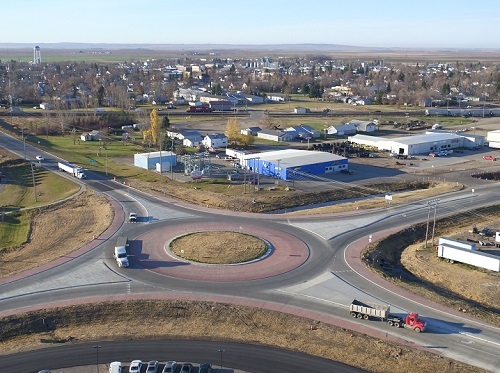The North Dakota Department of Transportation recently released the results of a traffic study completed in late 2023 that shows how the state’s roundabouts are decreasing vehicle crashes, reducing serious crash injuries, and saving lives.
[Above photo by the North Dakota DOT]
This study examined the safety performance of roundabouts by comparing the before-and-after completion crash rates and severity. Data was analyzed from 12 roundabouts on the state transportation system.
The results: Severe injury and fatal crashes declined by 59 percent due to roundabouts, with overall crash numbers down by 33 percent.
“Roundabouts are a proven counter safety measure and this data shows roundabouts are preforming well and saving lives in North Dakota,” said Ron Henke, the agency’s director, in a statement.
“Safety is the number one priority and consideration in all of our highway projects,” he added. “While we are pleased with the results of this study, we continue to explore new ways to reduce serious injuries and fatalities to zero. But we can’t do it alone. We need every driver, passenger, bicyclist, and pedestrian to take responsibility for their safety by staying alert and following the rules of the road.”
North Dakota DOT said the state built its first highway roundabout in 2012 on Highway 22 near Killdeer. Today, there are 14 roundabouts dotting the state’s transportation system with 13 additional roundabouts planned to be installed in the next few years.
Other state departments of transportation have conducted similar studies of roundabouts, with the results mirroring those of North Dakota DOT’s findings.
For example, in September 2023, the Pennsylvania Department of Transportation released the results of a study based on at least three years of crash data from 36 roundabouts on state routes at 33 intersections statewide that were previously stop or signal controlled.

The agency said its analysis indicated that roundabouts reduced suspected serious injuries by 76 percent and reduced suspected minor injuries by 22 percent, with the total number of crashes decreasing by 9 percent.
PennDOT noted that, in addition to those 36 roundabouts, it has built 38 additional roundabouts on state routes, with 16 more under construction and 15 in final design.
Also, in July 2020, the Transportation Research Board unveiled a National Cooperative Highway Program analysis of roundabout intersections that found while improved safety is their main benefit they may also be a less expensive option as well as a way to make better use of space at roadway intersections.
That NCHRP report – entitled Design Guidance for High-Speed to Low-Speed Transitions Zones for Rural Highways – also found that roundabout intersections, particularly those with only one lane in each direction, reduce the complex decisions drivers, pedestrians, and cyclists must make in navigating traffic, leading to fewer crashes and less severity of injuries when crashes do happen.
 States
States
NCDOT to Rebuild I-40 with National Forest Rocks
June 27, 2025 States
States

